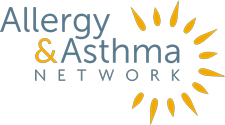
By Michael Zacharisen, MD
Dining out is meant to be festive and relaxing, not a burden or a time where worry zaps your energy trying to stay safe.
For individuals with latex allergy, the challenge at restaurants is threefold. First, kitchen staff may use latex products such as gloves while preparing food. Second, a variety of foods have cross reactivity with latex proteins (termed Latex-Fruit Syndrome) that can induce anaphylaxis, a severe allergic reaction. Third, if you see latex balloons for parties or in banquet rooms, exit immediately. Only Mylar® balloons are safe.
Currently, there is no cure for latex or food allergies. The management approach is strict avoidance and early treatment – using an epinephrine auto-injector – for an allergic reaction.
Foods that have a high degree of cross reactivity with latex are banana, avocado, kiwi and chestnut. Foods with moderate cross reactivity with latex are apple, carrot, celery, papaya, potato, tomato and melons.
While many restaurants are familiar with common food allergens such as milk, egg, peanut, tree nuts or shellfish, there is less familiarity with latex-associated food allergens. In addition, these latex-associated foods are not included in the Food Allergen Labeling and Consumer Protection Act of 2004. Latex-allergic individuals are eager to find restaurants that accommodate their needs.
Before you go, call ahead
Share your latex allergy diagnosis with the hostess or manager. Does the kitchen staff use latex gloves during any aspect of food preparation? Emphasize the severity of your allergy and the potential consequences if you are exposed – you want to grab their attention.
Many restaurant corporations have already adopted a nonlatex policy. This list includes Burger King, Quizno’s, Denny’s, Red Lobster, Outback Steakhouse, Red Robin, Arby’s, Subway, Bahama Breeze, Smokey Bones Barbeque, Domino’s Pizza, Cracker Barrel Old Country Store, MacKenzie River Pizza, Disney World and Disneyland. Check out websites and menus of any restaurant you plan to visit.
Higher risk situations are establishments with buffets (risk of cross contamination), pre-made foods (unable for the chef to eliminate an ingredient), and eateries that frequently use banana, kiwi or avocado. Look for restaurants that have food allergy training for employees.
When you arrive…
Notify the hostess and server of your latex allergy and review the menu for dishes that are unsafe. Bring a “chef card” with details of your allergy that the server can hand to the chef. By submitting this card, you don’t have to rely solely on verbal communication passing from server to chef.
Despite these precautions, latex-allergic individuals are recommended to carry two epinephrine auto-injectors, wear medical identification and carry a letter from an allergist detailing the diagnosis and what to do in case of an emergency.
Restaurant ResourcesThe frenzied pace of working in a diner, bistro or gastropub requires every member of the restaurant team – from hostess, executive chef, manager, line cook and server – to be familiar with food and latex allergies, and to work together to ensure food service is safe. Visit the Allergy & Asthma Network’s Latex Allergy Toolbox web page to download a poster and fact sheet on hidden latex allergy dangers in restaurants, grocery stores and food service. |
Michael Zacharisen, MD, FACAAI, is a board-certified allergist with Family Allergy & Asthma Care of Montana in Bozeman, Montana.
Reviewed by Sue Lockwood

 810304 Eaton Place, Suite 100
810304 Eaton Place, Suite 100